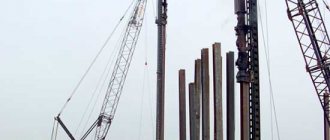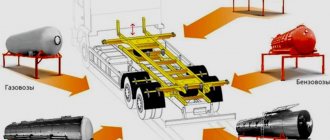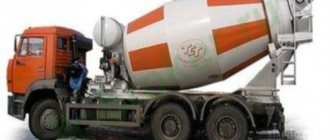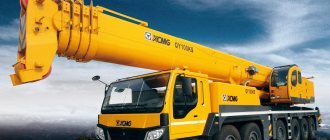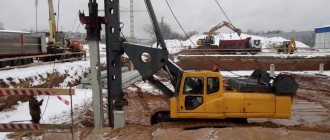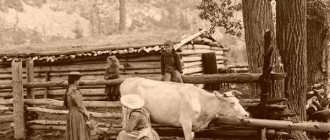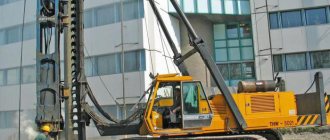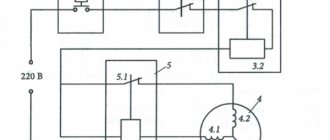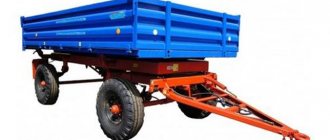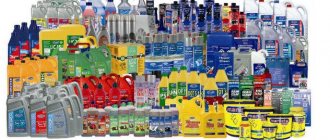If during construction there is a need for piling work, along with other equipment the contractor will definitely need a pile driver. What it is?
Drive hammers, piling hammers or diesel hammers for piling work are one of the necessary types of construction equipment when constructing pile foundations and other operations, such as constructing pits or driving pipes. This technology is used in various situations: on complex and water-logged soils, to reduce the cost of materials and construction work, during construction in populated areas and near other buildings and structures, etc.
Driving piles with a diesel hammer also allows you to carry out work in conditions of moving soil, temperature changes and soil freezing, dynamic changes in groundwater levels, etc. Pile foundations are an almost universal technology that can be used to solve a variety of problems!
But not only the professionalism of the builders, but also the quality of the equipment used plays a big role in how high-quality, reliable and durable the foundation turns out to be. The efficiency of every device and piece of equipment is important: from surveying tools to pile drivers and hammers.
The latter are used at the final stage of work for direct immersion of piles; the final quality of the pile foundation largely depends on their serviceability and efficiency.
Operating principle of a diesel hammer
Diesel hammers are not the only type of device used in piling work. There are also hydraulic and steam driven machines, but diesel hammers are the most common solution - reliable and easy to operate. The operating principle of a diesel hammer combines two types of impact - impact and gas-dynamic.
The impact part of the hammer, falling, hits the pile, imparting kinetic energy to it, and the detonating fuel pushes the device upward for a new working cycle. Thus, the work of the hammer is carried out in several stages:
- the striking part of the hammer engages with the cat and rises upward using a special winch;
- the hammer head falls down under the influence of its own mass and strikes the hinged head of the pile;
- when falling, the air inside the striker is compressed and heated to 650°C;
- the heated fuel mixture detonates, and the gas-dynamic impulse returns the firing pin to the uppermost position;
- the cycle is repeated until the end of the work.
The operator controls the fuel pump and controls the operation of the pile driving machine. In order for the pile driving process to be carried out successfully, you need a qualified specialist and reliable equipment.
Contact us to purchase modern pile driving devices! From us you can also order piling and other construction work, rent or lease equipment, buy spare parts and components, and much more!
Pros and cons of the design
Despite some differences between tubular and rod devices, they have common positive and negative qualities. The advantages include the following:
- mobility;
- quite simple and very reliable design;
- energy autonomy;
- The productivity of the machines is quite high.
If we talk about shortcomings, there are only three of them. The first is the ground vibration that occurs when struck by a hammer. During operation, a large amount of dust is created, which makes work difficult. In addition, the detonation of diesel fuel releases a certain amount of harmful substances into the atmosphere, thereby polluting it. The price of a tubular diesel hammer starts at a higher amount - from 320 thousand rubles.
Types of piling hammers
It has already been mentioned that compared to hydraulic and steam hammers, diesel devices are used much more often. Such a hammer is essentially a diesel engine mounted on the mast of a piledriver and pushes the impact head along vertical guide rods.
Hammers come in two main varieties: rod (MSDSH and DD) and tubular (MSDT). The rod hammer design uses a cylinder of two rods, while the tubular hammer design uses a fixed pipe.
Unit characteristics
If we consider diesel hammer devices, the tubular type is considered more efficient and also has a more advanced design. If you take a hammer of the same weight, tubular and rod type, and compare their efficiency, you will notice that with the same weight, the tubular design allows you to drive heavier piles. The difference in weight can be up to two or three times greater. The main structural parts of these machines are:
- cylinder or rods;
- the striking part, the striker or the head, which moves inside the cylinder;
- chabot, which is the lower part of the hammer to which the head is attached.
Tubular hammers are more complex and consist of the following elements:
- guide pipe;
- internal lubrication system and temperature control system;
- a hammer cylinder in which the fuel detonates;
- hammer head (this is the striking surface that comes into contact with the hammer head during operation);
- impact woman - a piston with compression rings;
- “cats” are devices for fixing and dropping piles.
In addition, the tubular hammers are equipped with water cooling systems necessary for long-term use of the machine without interruption. The design of rod hammers does not include cooling, so their operation must be interrupted every hour for natural cooling.
Areas of application of hammers
The use of a diesel hammer with rods is only possible if the soil has a sufficiently low density. This is due to the fact that the impact energy of this type of hammer is limited - approximately 27-30% of the potential. The most common type of this type of construction are those units whose impact head weight reaches 2500 and 3000 kg. The impact force of such devices reaches 43 kJ. With such indicators, diesel installations are capable of performing up to 50-55 blows in one minute.
As for the use of tubular hammers, they can be used to drive reinforced concrete piles into any type of soil. It is possible to work even on permafrost soil. In this case, the pile is driven into a pre-drilled channel.
The temperature range in which such a unit can operate is from -45 to +45 degrees. However, if the ambient temperature is less than 25 degrees, then before starting work, the piston block must be heated before starting the entire installation.
Depending on the weight, the impact force of the hammer starts from 40 kJ and can reach 165 kJ. The maximum operating speed of this type of installation is limited to 42 beats per minute.
Hammers are also divided according to the mass of the impact part. The classification includes three types of machines:
- lightweight – devices with a striker weight of up to 0.6 tons;
- medium - pile drivers with a weight of the impact part of up to 1.8 tons;
- heavy - hammers with a hammer weight of more than 2.5 tons.
What kind of hammer do you need to do the job you need? The answer depends on the construction site conditions and general requirements. The main area of application of rod hammers is work on loose soil, which does not imply a large operating load on the equipment. Rod hammers are more complex devices with a large margin of safety, efficiently consume energy and are suitable for working in difficult soil conditions.
It is obvious that light hammers are most often used for low-rise construction (including private), and medium hammers are used for more monolithic structures: large-scale construction of residential buildings, industrial and even military facilities. Heavy hammers are used when buildings and structures being erected must have increased stability, when working with large and heavy piles.
Consultants will help you decide on the choice of equipment for your construction site, tell you in more detail about the advantages and disadvantages of various types of hammers, and reveal all the intricacies of the work process. You can ask any questions you are interested in and order construction equipment on the most favorable terms!
Main types
To begin with, it is worth noting that the classification of diesel hammers is carried out according to their design features. There are two main types - tubular and rod hammers. As for the tubular type, a fixedly fixed pipe is used here. Rod equipment uses two vertical rods as a working tool. In addition, diesel hammers can be divided into several classes depending on the weight of their impact part. Today there are three main groups:
- up to 600 kg - these are light hammers;
- from 600 to 1800 kg - medium-weight hammers;
- all instruments weighing more than 2.5 tons are considered heavy.
The design of these units should be considered separately for each type.
Selecting a pile driving installation
The choice of installation for driving piles is dictated by the parameters of a specific construction site. Therefore, the best installation is the one that most closely matches the technical and economic conditions and construction tasks. For comparison, let's take two extreme cases. For the first of them, when it is necessary to construct a foundation in a short time in close proximity to neighboring buildings in difficult soil conditions with the minimum permitted percentage of support rejection, a hydraulic installation for driving piles is recommended.
For the case where the time allotted for the execution of a pile foundation is quite sufficient, and the object will be built at a considerable distance from other structures in good soil conditions, a pile driving machine with a mounted diesel hammer will fully justify its use in terms of economic parameters (at least from the point of view in terms of capital investments at the foundation construction stage).
The BEST-STROY company can rent piledrivers in Moscow, the region and other regions. Also, pile driving in Moscow and other Russian cities can be provided as a complete complete service - call and order!
A pile driving hammer consists of the following main components: a) a working body - a movable striking part that strikes the pile (or a vibrating part that transmits vibration to the pile); b) a fixed part (frame, body), ensuring constancy of the direction of movement of the striking part and structurally uniting all the mechanisms of the hammer; c) devices for alternating working and idle strokes of the impact part of the hammer (or regulating the disturbing force of vibration systems); d) a cap that directly absorbs the impact of the falling part of the hammer (or vibration from the vibration system).
All these components of the piling hammer are structurally combined using the frame (body) of the hammer.
The standard sizes of pile driving hammers are determined by their main characteristics, which are considered to be: a) for single-action hammers - the weight of the impact part in kg; b) for double-action steam-air hammers - impact energy in kGm.
Single-action steam-air hammers
A simple (single) action steam-air hammer is a unit in which an external energy source (steam or compressed air) is used only to lift (idle) the striking part, which then falls under its own weight (power stroke). The hammer control can be manual, semi-automatic and automatic.
According to their design features, hammers of this type are divided into: 1. Hammers with an impact cylinder and a fixed solid piston rod located below the piston. Such hammers are manually controlled, weigh 1250-6000 kg and are the simplest in design and at the same time the least advanced among single-action hammers. Their main disadvantages are: low blow frequency (!0-15 per minute), rapid wear of the steam hose (when the hammer is in constant motion) and high steam consumption.
Rice. 172. Scheme of a single-action steam-air hammer with semi-automatic control
2. Hammers with an impact cylinder and a fixed hollow rod located above the piston and supplying steam or compressed air into the cylinder. These hammers are produced with semi-automatic control; they make up to 30-40 beats per minute. The striking part of the hammer (Fig. 172), as in manually operated hammers, is the body, the inside of which is a steam cylinder. The cylinder contains a stationary piston with channels. The piston is connected to a hollow rod, through which steam or compressed air enters the cylinder during the rise of the housing. The rod and piston contain two distribution pistons, connected to each other by a common rod. These pistons can be moved vertically using a lever; depending on the position of the piston, steam (compressed air) will either enter the empty rod and then (through channels in the large piston) into the housing cylinder, or its access to the cylinder will be stopped.
With the extreme lower half-pattern), i.e., after hitting the head of the pile, the piston is set to the lower position, as a result of which steam access into the channel, and therefore into the above-piston cavity of the cylinder, opens. Under the influence of steam, the housing rises, and with it, the beveled distribution rail attached to it rises. When the bevel passes along the short arm of the lever, the latter, together with the rod and piston, rises to a position as a result of which the channel will be blocked and the access of steam (compressed air) to the cylinder will cease. At the same time, the cavity of the cylinder communicates with the atmosphere through the channel and the outlet hole in the lower part of the body, while the steam pressure (compressed air) in the cylinder decreases sharply, and the body falls onto the head of the pile. The movement of the rod with the pistons and the introduction of a new portion of steam into the cylinder after impact occurs manually using a rope attached to the lever. Reducing the lifting height of the striking part is carried out manually using a lever. During operation, the striking part slides along a guide rail, resting its heel on the pile being driven.
The advantage of single-action hammers is their low dead weight (weight of stationary parts), amounting to about 30% of the total weight of the hammer. The weight of the impact part of these hammers, depending on the model, ranges from 1250 to 9000 kg. The required steam boiler output is from 300 to 1100 kg/h at a pressure of 800 to 1000 kN/m2 (8 to 10 kg/cm2). The stroke length (fall height) of the impact part of the hammer usually does not exceed 1.4-1.5 liters. The number of hammer blows on the pile is from 35 to 65 per minute.
Double action steam air hammers
Double-action piling hammers are a unit in which an external source of energy (steam or compressed air) is used not only to lift the impact part of the hammer, but also to provide additional impact on it when falling.
Due to this, the length of the working stroke of double-action hammers is reduced without reducing the impact energy, and thereby the frequency of impacts increases significantly. Hammers of this group are produced only with automatic control. The schematic diagram of the hammer is shown in Fig. 173.
The hammer consists of a body with a steam cylinder; a piston with a striker rod fixed to the rod; impact plate, through which the impact action is transmitted to the pile; holes for both inlet and outlet of steam; Eyelets for hanging the hammer on the hook of the lifting rope. To regulate the inlet and outlet of steam (compressed air), there is a spool device located on the side of the holes.
With the piston position shown in Fig. 173, a, steam is admitted into the above-piston space of the cylinder through the hole, followed by a working stroke, a blow to the head of the pile and the release of steam from the under-piston space into the atmosphere through the hole.
Following the impact (the position of the piston in Fig. 173, b), the spool automatically closes the hole, stopping the access of steam to the space above the piston, and opens hole 8 for the admission of steam into the space below the piston, as a result of which the impact part rises up, idling. Then the cycle repeats.
Double-action piling hammers can have a total mass of 8000 kg, a mass of the impact part of 12300 kg; on special orders they can have a greater weight. The frequency of beats per minute is 100-200 in heavy models, up to 500 in medium ones and up to 1000 in light ones. The high frequency of impacts, despite the relatively low weight of the impact part, allows these hammers to be used very effectively for driving piles and steel sheet piles.
Release
Double action hammers are more productive than single action hammers and are smaller in size. They can also be used for pulling out steel sheet piles or piles, as well as for working under water.
Rice. 173. Scheme of a double-action steam-air hammer
The disadvantage of double-action hammers is their high dead weight (weight of stationary parts), reaching 80% of the total weight. This is explained by the fact that during the working stroke of the piston, the force of steam pressure (compressed air), acting from above on the piston, tends to lift the hammer body above the pile; this force is counteracted only by the weight of the body, which therefore must be large. This drawback has been largely eliminated in more advanced differential action hammers, the dead weight of which is reduced to 55-65% of the total.
In differential action hammers (Fig. 174), two pistons of different diameters are located inside a stepped cylinder on a common rod. By a distribution device with a round spool, steam or compressed air is continuously supplied through a channel, during the working and idling strokes, into the cavity enclosed between the pistons.
The cylinder cavity above the large piston through a channel and spool is alternately connected to the atmosphere or to the steam boiler (compressor air collector). In the first case, during idle, the striking part with the rod and heavy striker rises. In the second case, during the working stroke, the striker hits the pile head; The impact force is the difference between the sum of the forces acting from above on the large or small pistons and the force acting from below on the large piston.
Since the area of the piston on which the steam presses from below is significantly smaller than the upper area of the piston, the striking part of the hammer (striker, rod, pistons) begins to accelerate downwards, making a working stroke. The downward movement is facilitated by the own weight of the striking part.
Moving along with the striker, a special distribution rack, shortly before the striker hits the pile, acts with a cam on the spool lever, switches it to connect to the atmosphere, and the cycle repeats.
The advantages of double-action hammers over single-action hammers are: a) high frequency of impacts, which reduces the frictional resistance of the soil and ensures relatively continuous movement of the pile during its immersion; b) the ability to drive piles at any angle in confined areas without the use of pile drivers; c) the ability to work under water;
Rice. 174. Differential action steam-air hammer
d) the possibility of use for extracting piles; e) ease of management and operation, as well as high portability and transportability.
Double-action steam-air hammers are widely used for driving heavy, long metal sheet piles into the bases of hydraulic structures.
Differential action hammers are a type of double action steam-air hammers. They are characterized by a more satisfactory ratio of the dead weight of the hammer to the energy of its impact. Differential action hammers have a hammer weight of up to 9 g with a total weight of up to 17 g and deliver from 100 to 200 blows per minute.
The operational advantages of differential action hammers are more economical consumption of steam, which is consumed only during the working stroke, as well as the location of the cylinder inside the housing, which ensures lower heat losses and less steam condensation when the hammer operates in winter conditions.
Diesel hammers
In this type of piling hammer, the internal combustion engine and the hammer are structurally combined into a single unit, and the conversion and use of energy is carried out during a single work process. Diesel hammers operate on liquid fuel on the principle of two-stroke high compression engines. Based on the principle of impact, these hammers are classified as single-action hammers.
Two types of diesel hammers have become widespread in construction: rod and tubular.
For rod-type hammers (Fig. 175, a), the striking part is a movable cylinder that moves along guide rods. The rods are mounted on the lower part of the hammer, which is placed on the head of the pile; at the top they are connected by a traverse.
Rice. 175. Diesel hammer: a - rod; b - tubular
The hammer piston 5 and a nozzle connected to a high-pressure pump 6, which is driven by a falling cylinder, are fixed in the bottom plate. The cylinder, raised to the top position, falls under the influence of gravity. When the cylinder hits the piston, the air in the cylinder is compressed to 6-7 Mn/m2 (60-70 kg/cm2), heating up to the ignition temperature of the fuel.
At the end of compression, when the pump lever is acted upon, fuel is injected into the cylinder and atomized. The flammable mixture ignites when the cylinder hits the bottom of the hammer. In this case, the gas pressure pushes the cylinder upward to its initial position. The gases escape into the atmosphere, the cylinder is filled with fresh air, falls again, and the cycle of operation of the diesel hammer is repeated. The number of blows of this hammer reaches 50-60 per minute.
The lifting height of the impact part is regulated by the amount of fuel supplied and varies within 1-2 m.
In diesel rod hammers, due to incorrect installation of the fuel supply lever, the flash may advance, which leads to a decrease in the impact effect, since the gas pressure in the cylinder in this case slows down the movement of the striking part of the hammer and the productivity of the latter is sharply reduced.
In a tubular diesel hammer (Fig. 175.6), as opposed to a rod hammer, the impact part is a heavy moving piston with a ball head.
Rice. 176. Scheme of operation of a tubular diesel hammer
A cylinder in the form of a tube open at the top, in which the piston moves, is made motionless and installed on a pile, resting on it using a pin on the heel of the cylinder. .In the heel of the cylinder there is a spherical recess corresponding to the ball head of the piston. Fuel is supplied to this recess by the low pressure pumps before the end of the power stroke. Fuel is atomized by striking the piston head on the spherical part of the cylinder bottom. At the moment of impact, the magnitude of the greatest compression reaches 6 Mn/m2 (60 at). The cylinder heel is seated on a sealing ring, which gives it some mobility and protects the cylinder from impact. There are windows in it to release gases and purge the cylinder.
The operation of a tubular diesel hammer (Fig. 176) begins from the moment when the piston, raised by a winch to the upper position, is automatically disconnected and begins to fall down. This is the beginning of the first stroke of the internal combustion engine.
During the first stroke, the potential energy of the raised piston is converted into kinetic energy and transferred to the pile in the form of an impact and through the compressed air in the cylinder. At the same time, the cylinder is purged, fuel is supplied, air is compressed and the working mixture is formed by splashing from the impact. The working mixture ignites at the moment of impact.
The second stroke of the internal combustion engine of the hammer begins with the upward movement of its piston. In this case, the following processes occur: self-ignition, expansion of gases, air suction and partial purging when the piston moves upward. The work of gas expansion is spent on lifting the piston to the upper position, on overcoming the resistance to the upward movement of the impact part, as well as on the work of deformation and immersion of the pile.
The blow frequency in tubular diesel hammers reaches 50-60 per minute with the piston-impactor lifting up to 2 m.
The main advantages of diesel hammers are their independence of operation from an external energy source, high technical readiness of the unit, relatively low operating costs and significant productivity when driving light piles.
When comparing rod and tubular diesel hammers, it should be noted that the design of a tubular hammer is more advanced, as it is simpler and more reliable in operation.
However, diesel hammers have a number of serious disadvantages. They transfer only 40-50% of the kinetic impact energy to the pile, spending the remaining 60:-50% on compression of the combustible mixture. Changing the degree of compression of the combustible mixture in diesel hammers has a great influence on the impact energy. A significant decrease in the compression ratio creates unacceptable stresses during hammer operation, which can lead to their rapid destruction. Therefore, diesel hammers, with equal weight to steam-air hammers, have significantly less useful power and higher metal consumption.
Parameters of pile driving hammers
The main parameters of pile driving hammers are impact energy, impact frequency, weight of the impact part, power of the hammer and speed of the impact part at the moment of impact.
From these formulas it follows: a) the useful work of immersing a pile into the ground will be greater, the smaller the ratio between the weight of the pile and the weight of the impact part of the hammer; b) losses due to plastic deformation of the pile and hammer increase faster with increasing speed of the impact part than with increasing its weight. Consequently, when working with the standard size of a pile hammer, it is necessary to take into account not only the impact energy, but also the weight of the impact part.
The value of impact energy given in the technical characteristics of pile hammers is conditional, since it is taken without taking into account losses.
The piling hammer must have the highest possible impact frequency. With rapid alternation of blows, the cycle of change in soil resistance between two successive blows does not have time to end, the soil surrounding the pile will be constantly loosened, and its resistance to immersion of the pile will be less.
The frequency of blows is determined by the number of hammer blows in 1 minute at the maximum stroke length of the striking part and the steam or compressed air pressure at the inlet (according to the passport).
The weight of the impact part of the hammer sent by the impact energy should be as large as possible, which ensures a higher impact efficiency.
The speed of movement of the impact part of the hammer at the moment of impact should not be high, since at high speeds a significant percentage of the energy will be spent within the head of the pile, which can lead to its rapid destruction. The permissible limit is speed up to 7 m/sec.
The selection of a piling hammer is made according to the maximum energy value of its impact on the pile, taking into account the calculated value of the load.
Driving piles with hammers is carried out in all soils, except rocky ones. Hammers are selected based on the condition that the impact energy of the hammer is proportional to the maximum load-bearing capacity of the pile on the ground.
Rice. 109. Pile caps with spherical supporting surfaces.
Rice. 110. Fork head for rectangular tongue and groove.
More advanced are double-action steam-air hammers, consisting of a steam cylinder, its upper and lower covers, and a lower annular cover. The impact part is the woman connected to the piston rod. The body of double-action hammers is closed, which allows them to be used when working under water.
Double-action steam-air hammers make it possible to automate stroke control, drive piles without a pile driver, at any inclination and in cramped conditions. Used for driving metal tongues (Fig. 111).
To drive piles, sheet piles, and loosen solid soil, diesel rod hammers are used, in which the energy of flammable gases is transferred to the impact part of the hammer. There are hammers with fixed rods that are used only with pile drivers, and movable ones that are used without pile drivers.
A diesel hammer with fixed rods consists of an impact part, a cylinder, a piston block, a lifting and dropping mechanism, a fuel pump, a fuel supply control mechanism, a hinged support, guide rods and an upper crossbar (Fig. 112).
A diesel hammer with movable rods is designed for driving light wooden piles 6-8 m long and consists of a hammer, a crane beam and a chuck for attaching the hammer to the pile. Raising and lowering of the diesel hammer is carried out using a crane beam.
Tubular diesel hammers provide greater impact energy and are therefore used when driving piles and sheet pilings of large diameters and considerable lengths. The impact part in them is a heavy piston. The hammer cylinder is a long pipe, open at the top and mounted on a chabot at the bottom. The chabot is movable relative to the cylinder, which ensures full mobility of the latter upon impact.
When the piston head hits the chabot, fuel is sprayed into the annular combustion chamber located between the cylinder walls and the cylindrical part of the piston, and ignites due to the high temperature of the compressed air.
JSC "Mikhnevsky RMZ" offers HYDRAULIC HAMMERS
Impulse SMG-200 Impulse NM-230 Impulse NM-120 Impulse GPM-120 Impulse I-300M Impulse NM-300 SMG-300, MG-300 D-600, SP-62HL GPM-300 ALL HYDRAULIC HAMMERS >>PRICES FOR HYDRAULIC HAMMERS >> 8-800-550-07-58, multi-channel.
Washing equipment is used to drive piles, sheet piles and shells into the ground in order to prevent the sliding of soil slopes or transfer part of the load to dense layers of soil lying at a depth of three or more meters under the soil foundations of engineering structures. On permafrost soils, pile construction is one of the few industrialized and relatively inexpensive ways to prevent thawing and movement under residential and industrial buildings.
